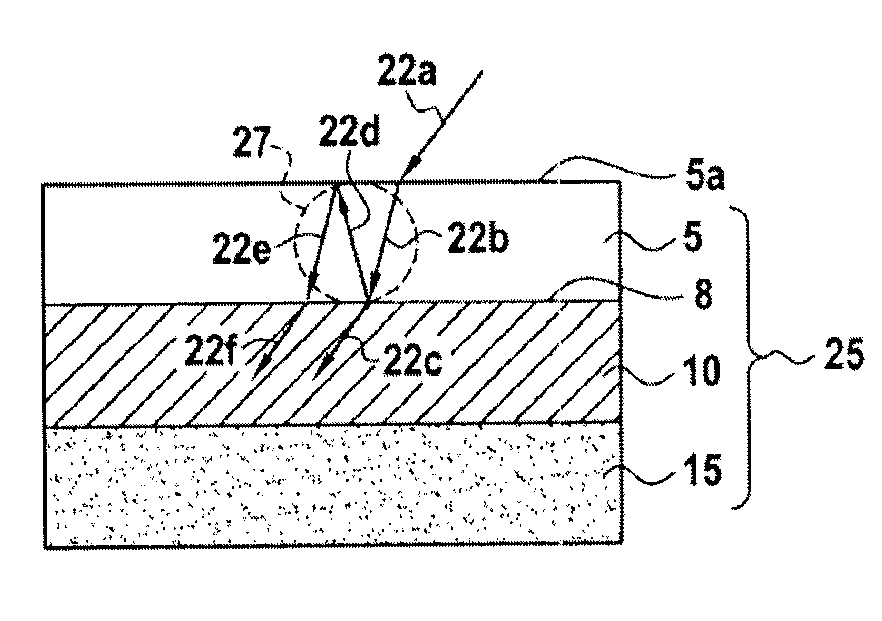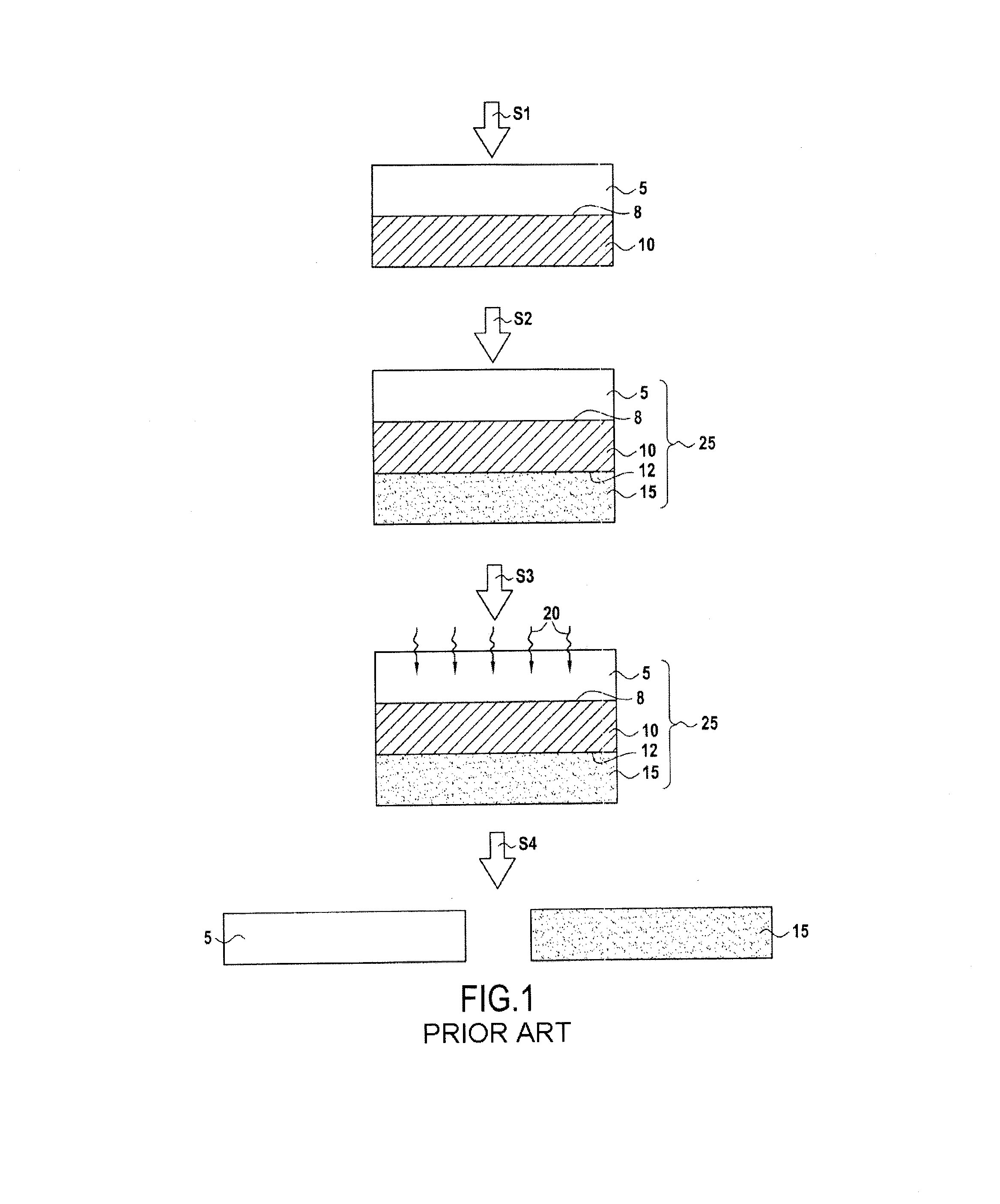Method for separating a layer from a composite structure
a composite structure and layer technology, applied in the direction of lamination ancillary operations, electrical equipment, chemistry apparatus and processes, etc., can solve the problems of less uniform separation, significant deformation, and more radiation exposure, so as to reduce the variation in actual transmitted energy, reduce the effect of optical interference between incident rays and reflected rays, and limit or avoid optical interactions
- Summary
- Abstract
- Description
- Claims
- Application Information
AI Technical Summary
Benefits of technology
Problems solved by technology
Method used
Image
Examples
Embodiment Construction
[0037]The present disclosure relates to a separation method making it possible to detach or weaken, by exfoliation, a layer to be separated from a composite structure of conventional or unconventional composition.
[0038]The Applicant has carried out a study which has made it possible to demonstrate the physical mechanism giving rise to the difficulties encountered for carrying out a method of separation by exfoliation. The study has in particular demonstrated the role of the optical interference occurring in the support substrate during the irradiation of the composite structure.
[0039]This mechanism will now be described with reference to FIG. 2. This figure represents the composite structure 25, as described above, with reference to FIG. 1.
[0040]FIG. 2 represents in particular an incident light ray 22a reaching the exposed surface 5a of the support substrate 5 during the irradiation step S3. As for any light ray encountering a semi-absorbent medium, a part (not represented) of the l...
PUM
| Property | Measurement | Unit |
|---|---|---|
| angle of incidence | aaaaa | aaaaa |
| angle of incidence | aaaaa | aaaaa |
| transmittance | aaaaa | aaaaa |
Abstract
Description
Claims
Application Information
 Login to View More
Login to View More - R&D
- Intellectual Property
- Life Sciences
- Materials
- Tech Scout
- Unparalleled Data Quality
- Higher Quality Content
- 60% Fewer Hallucinations
Browse by: Latest US Patents, China's latest patents, Technical Efficacy Thesaurus, Application Domain, Technology Topic, Popular Technical Reports.
© 2025 PatSnap. All rights reserved.Legal|Privacy policy|Modern Slavery Act Transparency Statement|Sitemap|About US| Contact US: help@patsnap.com



